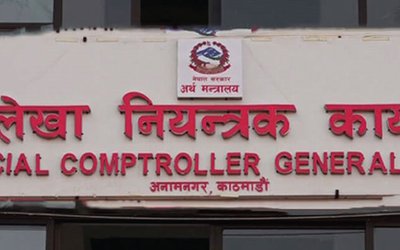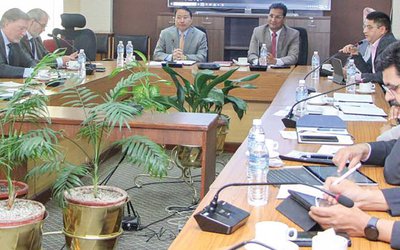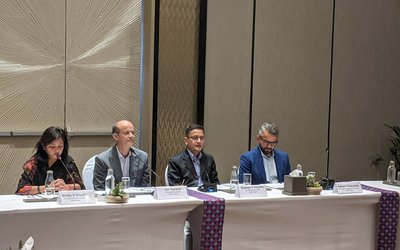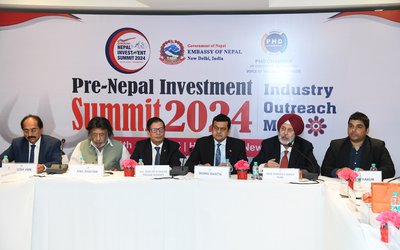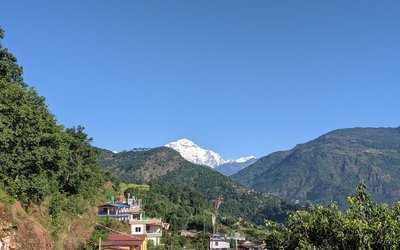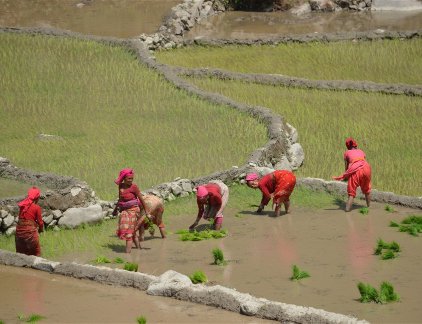
Context:
After the promulgation of the democratic, republican and inclusive constitution in 2015, Nepal has entered into an era of federalization. The recent election of the national legislative body (house of representatives) and provincial assembly has further institutionalized the federalization process. Federalization entails the overall restructuring of state and societal apparatus with shared rule and self-rule including principles for dividing final authority between member units and the common institutions. The newly promulgated constitution has many inclusive provisions and devolution of power and authority to federal state and local government. Consequently, people have high aspirations for federalization and they hope for societal restructuring to bring about overall socio-economic and cultural transformation.
It is a significant challenge for new central and
federal state government and assembly to: sketch the road map for overall state
and societal restructuring, reorient the existing government apparatus to
address the concerns of poor and marginalized communities in an agrarian
landscape, and streamline the overall process
of socio-political and economic transformation.
The recent constitution has inclusive provisions and
substantive issues on their behalf. For
example, the Constitution of Nepal 2015 (Article 25,36, 40, 51…) guarantees the
people’s rights over land, natural resources, and right to food and agriculture in alignment
with public interest and socialist orientation via legislation. Similarly,
Article 57 (Distribution of state power) Schedule 6, 8. has mentioned the
concept of State universities, higher education, and libraries for educating
and empowering the people for their engagement in overall social
transformation.
In such a context, what are the agendas of political
parties? How do they envision the federalized state in 10-15 years? What would
be the agenda of chief minister of each state? What will be the roles of
federal assembly members? How do CSOs and the media act as watchdogs during the
entire transformation processes? It is our responsibility to manage and engage
the proposed federalization process to address social justice and prosperity of
all 7 federal states from No.1 to No. 7.
To narrow the scope from the comprehensive federalization
process to a specific sector of change, this paper will illustrate the general
methods of inclusive agrarian transformation through application of the global
lessons of land grant university (LGU) model.
Recent Celebration of 150th Anniversaries of LGU
from US and Other Parts of the World:
The US government celebrated the 150th Anniversary
of the founding of the Land-Grant University Model and Colleges and System
(Campus and Community: Public and Land-Grant Universities and USDA at 150)
which has brought remarkable changes for overall agrarian transformation in the
US, Mexico, Canada etc. Some of key
prominent features are briefly stated below:
Establishing Land-Grant University System via Morril
Act 1862 by President Abraham Lincoln: It provides the grant of federal land to
any state willing to establish a public university to serve the community with
experiential learning beyond classical teaching and research. It fosters
academic excellence, diversity and inclusion.
In 1890, Historically Black Colleges/Universities (HBC/U) through second amendments of Morril Act were established to educate and empower enslaved African Americans to address their historical social and racial injustice. Hence, HBCs served as islands of hope for overall empowerment and social emancipation.
The International Association of Public and
Land-grant Universities (APLU): APLU is a voluntary association of public
research universities, land-grant institutions, state university systems in the
US, Canada, and Mexico which is committed to federal policies to strengthen
public universities based on principles of equal access and equal opportunity
in education.
Contribution to Civil and political rights:
Recognizing the extraordinary contributions of global icons Martin Luther King
and W.E.B. Du Bois, civil and political rights are given their due
considerations to address historical racial injustice and inequality for
emancipation.
Cooperative Movement: Cooperative extensions via
land grant models are technically designed for black farmers’ empowerment,
workers’ rights and economic justice in MISSIPI and Georgia State.
Hence, LGU and HBCs have contributed a plethora of
initiatives and works beyond classical academic excellence to serve
African-American farmers and their economic,
social and racial justice for inclusive transformation.
Efforts in Nepal so far:
Following the concept of the land-grant university model, there are several scattered efforts and initiatives in Nepal. Some of them are briefly illustrated below:
• After the grand religious function called ‘Mahayagya’ organized by Puranchaur Community (“Krishi College Sthapanartha Tadartha Committee Puranchaur, Kaski”), community voluntarily donated 50 ropanies (2.5 ha) land (equivalent to NPR 4 crores and 22 lakh) for establishing the technical community college dedicated to vocational, agricultural and livestock subjects. Later on, College of Natural Resources Management (CNRM) was established as branch college of Agriculture and Forestry University. With community contribution and motivation, there is a great possibility to be evolved as community based land grant college model
• Similarly, AFU senate, the highest governing council has also recently decided to establish such branch colleges in different geographical areas and it is in the inception process. All these should be committed to community and diversity as an outreach and extension program.
• Institute of Agriculture and Animal Science has a Directorate of Extension and newly established Research and Community Development Center under Lamjung Agriculture Campus to provide services to local communities.
. Council for Technical Education and Vocational Training (CTEVT) has established technical and vocational institutes to different geographic areas based on feasibility and potentialities of the geographical areas like Humla, Jumla, Jiri, Lahan technical institutes etc.
• Kathmandu University also established Kathmandu University Technical Training Center (KU TTC), which is providing services to community on electric engineering, organic farming, and agriculture for mid-level human resource development.
In sum, scattered efforts made so far are also needed towards integrating education with research and extension for rural transformation as conventional university education system of Nepal lacks research and extension functions that are important for inclusive rural and agrarian transformation.
What Next ?
Possibilities of Inclusive Agrarian Transformations via the concept of State Land-Grant University should be well devised and designed for addressing the true concerns of inclusive agrarian transformation: i) Based on needs and aspirations of people and feasibility of region/geography and constitutional provisions, a state university should be established for regional and community development beyond classical teaching functions. ii) Bottom up consultation with political parties and CSOs and community along with the key stakeholders are needed for robust planning for overall regional and territorial development considering land use planning and defined tenure security and local resource governance, iii) Commitment to diversity and social inclusion should be at center of discussion due to historical denial of rights in social, political, economic, cultural, geography, v) Local livelihood and employment opportunities focusing on youth should be emphasized, and vi) Educational equity and the human resource development in the multicultural and interdependent world should be the priority.
Conclusion:
Based on political mandate, commitment, constitutional provisions as well as the aspirations and expectations of the people, political decisions should take into consideration key aspects of inclusive agrarian transformation. After big political changes, it is the right time to take new political course and decisions for state restructuring. As was done by first US president Abraham Lincoln, the new state assembly should take initiative to develop their own federal state universities for their own inclusive transformation and development model. The University should be accountable to defined territories and communities, building a strong university-community relationship in an agrarian landscape. Through inclusive constitutional provisions, inclusive agrarian transformation, pro-poor agrarian reform, resources, governance can be designed based on regional planning and commitment to social diversity and inclusion for Nepal's future inclusive education and transformation.




